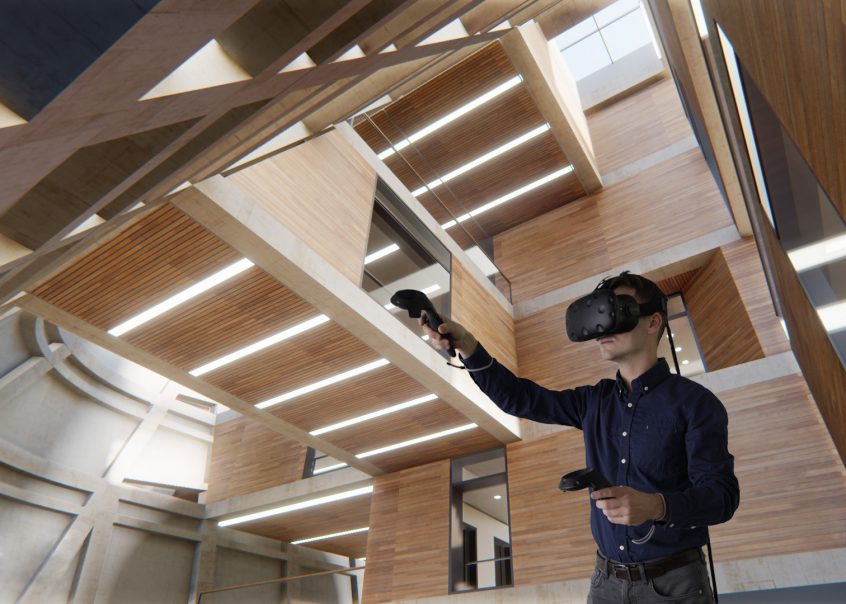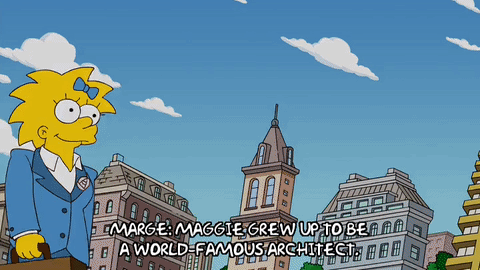When designing a building, often, no one knows what the building would really feel like to be inside until it is built. Now, with VR, we can explore the inside of a building that hasn’t been built yet, or even a building that is impossible to build.
The form of representation I would like to write about in this post is based on my own experience in creating three dimensional models. I went to architecture school for a year. We were encouraged to start thinking about our projects by making sketches. Though I would start out this way, scribbling in a sketchbook, I would quickly become frustrated by how, though my sketches managed to capture the feel and aesthetic of what I wanted they never managed to convey a sense of the space. I quickly moved on to making rough three dimensional sketches or sculptures with bits of paper, pizza boxes and a box cutter. This really helped me think spatially, to see in one go what it would take a plan, several sections and an isometric view to see before was immediately visible with the three dimensional sketches.


A few years later, I was teaching myself Maya. The modeling capability of the software was more powerful than my limited real life model building ability. Yet the interface of the 2D surface of the screen was a barrier to being really able to see what I was doing as I built. I would move a vertex a certain amount and once I rotated the camera, I would realize that I had moved it too much in the x, y or z direction without even noticing.
VR would be useful in taking a tour through the model of a building to a client. But it could also be extremely valuable at the sketching, conceptualizing and designing stages as well. The software would consist of ‘dynamic material’ that the user can manipulate by holding onto and dragging and scaling surfaces, vertexes, edges and volumes, like on maya.

The software would also have two modes, a miniature one where the architect can tinker with the model and change things and an immersive mode. Thinking about the scale of the body is also extremely important in designing architecture. The architect would be able to move from a miniature scale to placing themselves inside the model as they work on it.
There are some elements of a building that VR would not be able to capture as yet, like heat and air currents but VR would be excellent for representing and creating a sense of space.
